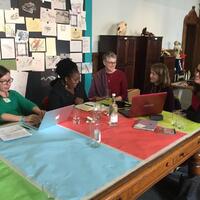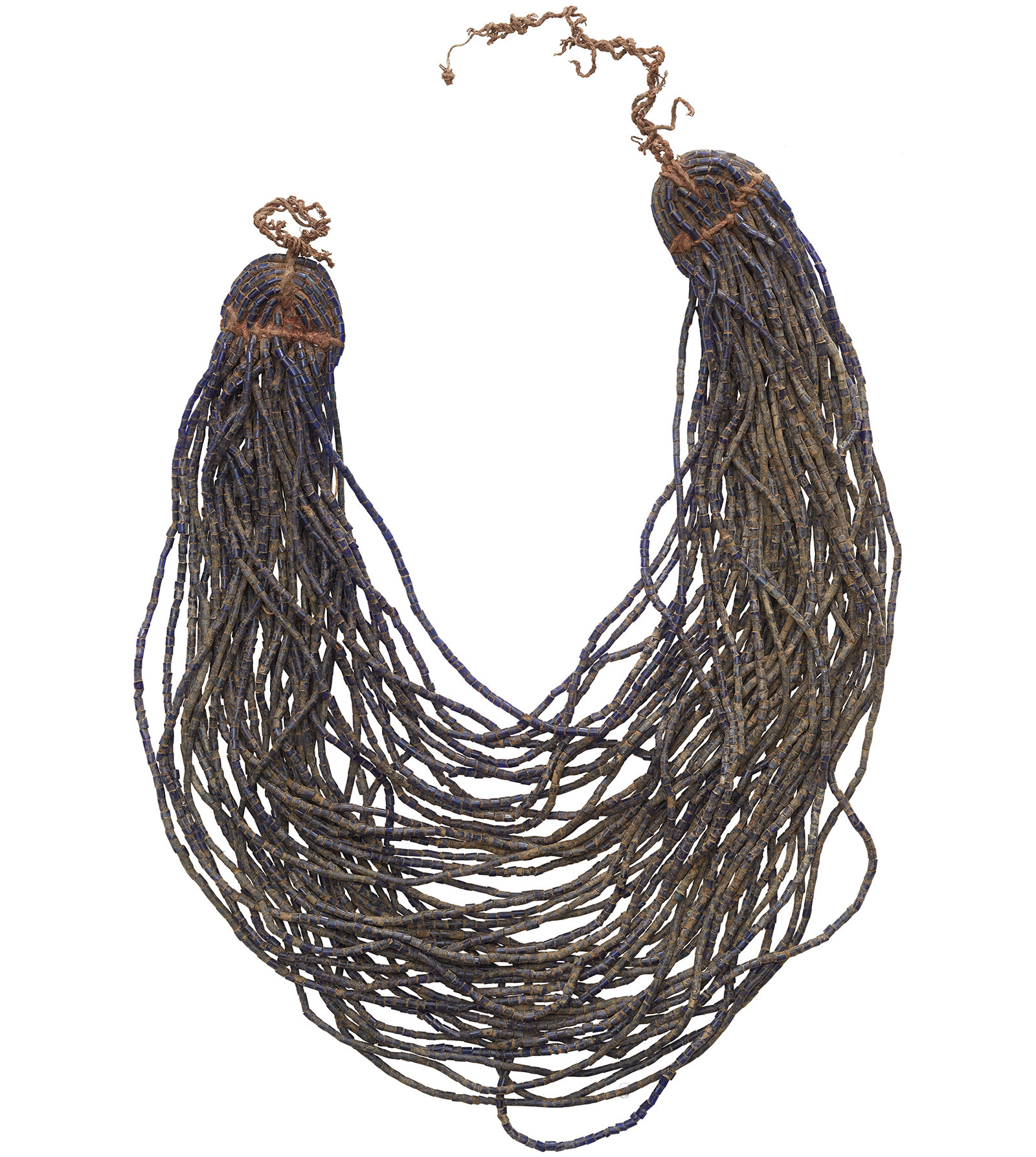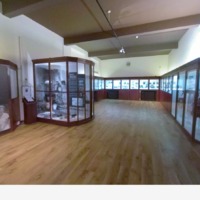Reflections on the Powell-Cotton Museum by Napandulwe Shiweda
Item
Title
Reflections on the Powell-Cotton Museum by Napandulwe Shiweda
Creator
Description
This report was created following Napandulwe's first visit to the Powell-Cotton Museum. It reflects her first impressions and is not intended to provide an in depth analysis of the museum or its displays. [NSty]
I visited the Powell-Cotton Museum in Kent for the first time on the 11th of February, 2019. Although it was my first time there, I have heard so much about the museum and its Kwanyama collection from a number of sources. I was introduced to the kind museum staff whowelcomed me and Nicola. Although the museum was not open to the public that day, the staffgave us access to view the galleries. The aim was to see the historic collections from Angola/Namibia borderland region and to get a feeling of what the exhibitions are showing. My very first impression was, "Wow!" centered on the natural history dioramas displaying mounted animals against backdrops of their ‘supposedly’natural habitats. These areoutstanding collections of African and Asian mammals. Although interesting, it is astonishing to see the massivenumber of animal and plant specimens used to create these famed dioramas. Their massive sizes, quality and imagery are quite extraordinary .Further galleries gave me a chance to observe interesting and fascinatingweaponry, a range of ceramics, textiles,a large number of ivory (elephant tusks) and important archaeological finds from Thanet and East Kent,etc
The manner in which African ethnographic artefacts are presented in these different galleries made a strong impression on me, particularly the plaster cast of an old man seated in a glass box. It reminded me of the San plaster casts found in some museums in Namibia and South Africa, cast from living subjects to record the physical appearance of the Sanpeople. This display evokes a sense of both life and death, so I think it is problematic to have this cast on display even if it is not necessarily cast from a living human being. The ethnographic displaysfrom Angola/Namibia border region were quite interesting too. Ethnographic artefacts have always intrigued me greatly due to my interest in issues around the notion of ‘collecting’ and the taxonomy of collections. Prior to my visit to the Museum, I had seen a CD with images and descriptions of some of the objects displayed in the museum, so I was looking forward to seeing these items in person. Most of these historical artefacts displayed in the museum are no longer seen or practiced in the regionwhere they originated from, due tocolonialism and the influence of Christianity. Thus, my immediate impression was followed by the question of how many more Angola/Namibia objects are there in thePowell-Cotton Museum.
Prominently featured were medicinal or ceremonial dolls (belonging to Kwanyama, Chokwe, Cuamato,etc.), hair dress/styles,adornments,etc. It’s clear that the Powell-Cotton sisters were fascinated with the collection of objects of practical use or ceremonial function. There is also a model of a Kwanyama homestead as part of the exhibition consisting of realistic replicas of huts ,etc., and accompanied by images to showcase the process of building the model. It is one of the only displays whose caption mentions names of local assistants from the region. This is interesting because many of the captions are extracted from notes that the two sisters made in their diaries. In most cases the historical context of objects that are displayed is missing, resulting in loss of much of their significance and meaning. Instead, display captions areheavily biased towards the Powell-Cotton sisters’ ideas and achievements, and no reference to the local people that assisted them in their quest, or information on the social, economic and political contexts of the region at that time. It would be important for the Powell-Cotton Museum to consider the opportunity to write the biographyof some of the objects and to discuss the ways in which an object might be interpreted in different ways
I also got a chance to see some of the archived artefacts that are not part of the gallery displays. Initially, I was inclined to give the Powell-Cotton sisters the benefit of the doubt because I didn’t want to be cynical until I had seen more of the collected objects. My doubts werebased on the fact that many European travelers of that time also participated in collecting information and objects that extended theories of race to prove the superiority of Europeans. Thus, African people and their cultures were reduced to specimens and scientific information. As we matched objects to diaries (archival information), photographs, and films, which were taken out for us to analyze, I became less sure about the Powell-Cotton sisters’ motives. I felt seriously unnerved as I looked at a number of different hair styles (with real hair and shells still attached) and wondered how they were acquired. With these ethical concerns in mind, I could not help but question the intention and methods used to get these objects. Considering some of these issues,the Powell-Cotton Museum needs to acknowledge that these collections are the consequence of a historical process and it is important to understand the increasing importance to establish links between collections and indigenous communities, and new forms of curating which must take account of the intangible cultural heritage associated with objects in a collection.
In closing, let me note that it will be significant for Powell-Cotton Museum to acknowledge that many of these objects were not obtained under what we would now consider ethical terms. This is evident in the detailed diaries, films and many photographs that reflect the cultural heritage of local communities and describe their journeys through southern Angola and some parts of north-central Namibia. The meaning of an object is linked with the place that gives it context and the community whose intangible cultural heritage provides a greater depth of understanding. Thus, it is important to create a network of communication that can connect Powell-Cotton Museum with the communities and places from where the objects originated from. The collaboration with the ‘Making African Connections’ project will therefore provide an opportunity for the reconnection of objects with the cultural landscape and intangible cultural heritage that provide them with context.
Date
February 2019
Relation
You can see the Angola gallery by clicking on the link below.
Item sets
Linked resources
Filter by property
| Title | Alternate label | Class |
|---|---|---|
 UK workshop and research trip 2019 UK workshop and research trip 2019 |
Event |



